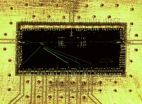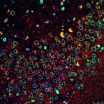(Press-News.org) Istanbul, Turkey – 20 October 2012: Coronary angioplasty improves survival in all patients with out of hospital cardiac arrest, according to research presented at the Acute Cardiac Care Congress 2012. The study was presented by Dr Annamaria Nicolino from the Santa Corona General Hospital in Pietra Ligure, Italy.
The Acute Cardiac Care Congress 2012 is the first annual meeting of the newly launched Acute Cardiovascular Care Association (ACCA) of the European Society of Cardiology (ESC). It takes place during 20-22 October in Istanbul, Turkey, at the Istanbul Lufti Kirdar Convention and Exhibition Centre (ICEC).
Out of hospital cardiac arrest is a leading cause of mortality and acute coronary occlusion is the leading cause of cardiac arrest. It is well known that when an electrocardiogram (ECG) shows that a patient has ST elevation, primary angiography must be done as soon as possible. If severe coronary disease is found, coronary angioplasty with percutaneous coronary intervention (PCI) is performed to open the blocked vessel.
But Dr Nicolino said: "There is controversy about what to do when a patient with out of hospital cardiac arrest has a normal ECG that does not show ST elevation. ESC Clinical Practice Guidelines are inconclusive – they say to consider performing coronary angiography but they don't say 'do it' or 'don't do it'."
She added: "Some previous studies have found that if the ECG is normal (no ST elevation) the patient can still have severe coronary disease and therefore needs a coronary angiography, followed by coronary angioplasty, to clear the blocked vessel."
The current study aimed to discover whether performing urgent coronary angiography, and PCI if required, would improve survival in all patients with out of hospital cardiac arrest (both those with ST elevation and those without).
The study included 70 patients who had out of hospital cardiac arrest between 2006 and 2009. Successful urgent coronary angiography and PCI improved hospital survival in all patients with acute coronary syndrome. The treatment increased hospital survival rates in patients with ST elevation myocardial infarction (STEMI) from 51% to 83% (p=0.003) and in non-STEMI (NSTEMI) patients from 55% to 81% (p=0.004).
"In our study, a successful urgent coronary angioplasty improved hospital survival in patients with STEMI and NSTEMI," said Dr Nicolino. "All patients with out of hospital cardiac arrest, if there is no non-cardiac cause, must have an urgent coronary angiography followed by coronary angioplasty if there is coronary disease."
Non-cardiac causes of cardiac arrest which should be ruled out before performing coronary angiography are trauma, brain haemorrhage and metabolic problems such as severe hypoglycaemia.
Dr Nicolino added: "ECG results can be misleading – we found that ECG detected just one-third of acute coronary syndrome in NSTEMI patients. This means that even if the ECG is not showing ST elevation, you cannot rule out an acute coronary syndrome. Coronary angiography should be performed urgently to see if there is any acute coronary disease which needs treatment with PCI."
Post-resuscitation neurologic injury (PNI) was the biggest complication. This can occur if resuscitation is not performed early enough, since the brain's blood supply stops during cardiac arrest. The 32.8% of patients who had PNI were at the greatest risk of death. Early signs of PNI were associated with underuse of coronary angioplasty and PCI.
Provided there was no neurological injury, MI patients who had angioplasty after cardiac arrest achieved the same one-year survival rates as patients with MI alone.
The first heart rhythm was a ventricular fibrillation (VF) or a ventricular tachycardia (VT) in 62% of patients. Most of these patients had an acute coronary syndrome (STEMI or NSTEMI). The incidence of VF and VT was the same in STEMI and NSTEMI patients. "For many years we have thought that patients with STEMI have a greater arrhythmic risk than NSTEMI patients," said Dr Nicolino. "But we found that both STEMI and NSTEMI patients are at high risk of arrhythmias."
She added: "If the first recorded rhythm is a VF or a VT an acute coronary syndrome is highly probable and it's important to perform a coronary angiography immediately without waiting for a diagnosis of infarction (using an enzyme test)."
Dr Nicolino concluded: "Patients with out of hospital cardiac arrest must be managed by cardiologists, intensive care doctors and anaesthesiologists. This team can save the brain from injury using cooling therapy, and save the heart and life of the patient using coronary angioplasty."
###
Coronary angioplasty improves cardiac arrest survival
2012-10-20
ELSE PRESS RELEASES FROM THIS DATE:
Using human stool to treat C. diff is safe, effective
2012-10-20
DETROIT – A novel therapy that uses donated human stool to treat the deadly and contagious
C.diff infection is safe and highly effective, according to a Henry Ford Hospital study.
Researchers found that 43 of 49 patients recovered swiftly after treatment and had no adverse complications from C.diff three months later. Treatment is performed either through a nasogastric tube or colonscopy on an outpatient or inpatient basis.
Mayur Ramesh, M.D., a Henry Ford Infectious Diseases physician and senior author of the study, says the treatment, while appearing unconventional, ...
Study: Optimal treatment duration for MRSA-related pneumonia
2012-10-20
DETROIT – The national practice guideline for treating MRSA-related pneumonia is seven to 21 days. A Henry Ford Hospital study found that effective treatment can be done in half the time.
Researchers found that 40 percent of patients were treated for eight to 13 days on a therapy of the antibiotics vancomycin or linezolid, and had the highest survival rate.
The Henry Ford study is believed to be the first to evaluate the length of treatment for MRSA-related pneumonia.
The study is being presented Friday at the annual Infectious Diseases Society of America meeting ...
Weight loss does not lower heart disease risk from type 2 diabetes
2012-10-20
Intervention stopped early in NIH-funded study of weight loss in overweight and obese adults with type 2 diabetes after finding no harm, but no cardiovascular benefits
An intensive diet and exercise program resulting in weight loss does not reduce cardiovascular events such as heart attack and stroke in people with longstanding type 2 diabetes, according to a study supported by the National Institutes of Health.
The Look AHEAD (Action for Health in Diabetes) study tested whether a lifestyle intervention resulting in weight loss would reduce rates of heart disease, stroke, ...
Breakthrough offers new route to large-scale quantum computing
2012-10-20
In a key step toward creating a working quantum computer, Princeton researchers have developed a method that may allow the quick and reliable transfer of quantum information throughout a computing device
The finding, by a team led by Princeton physicist Jason Petta, could eventually allow engineers to build quantum computers consisting of millions of quantum bits, or qubits. So far, quantum researchers have only been able to manipulate small numbers of qubits, not enough for a practical machine.
"The whole game at this point in quantum computing is trying to build a ...
Take control! Exploring how self-discipline works and how we might boost it
2012-10-20
Converging scientific evidence – not to mention a great deal of life experience – tells us that self-control is an important ability. It helps us keep our cool, get things done, and resist the things that tempt us. Scientists believe that gaining a clearer understanding of how self-control works could provide critical insights into addressing some of the large-scale problems facing society today, including obesity and addiction.
Numerous studies have found evidence for the idea of self-control as a limited resource, but emerging research suggests that this model may not ...
Salk scientists pinpoint key player in Parkinson's disease neuron loss
2012-10-20
LA JOLLA, CA---- By reprogramming skin cells from Parkinson's disease patients with a known genetic mutation, researchers at the Salk Institute for Biological Studies have identified damage to neural stem cells as a powerful player in the disease. The findings, reported online October 17th in Nature, may lead to new ways to diagnose and treat the disease.
The scientists found that a common mutation to a gene that produce the enzyme LRRK2, which is responsible for both familial and sporadic cases of Parkinson's disease, deforms the membrane surrounding the nucleus of a ...
Daily vibration may combat prediabetes in youth
2012-10-20
AUGUSTA, Ga. – Daily sessions of whole-body vibration may combat prediabetes in adolescents, dramatically reducing inflammation, average blood glucose levels and symptoms such as frequent urination, researchers report.
In mice that mimic over-eating adolescents headed toward diabetes, 20 minutes of daily vibration for eight weeks restored a healthy balance of key pro- and anti-inflammatory mediators and was better than prescription drugs at reducing levels of hemoglobin A1c, the most accurate indicator of average blood glucose levels, said Dr. Jack C. Yu, Chief of the ...
Disk galaxies formed gradually, astronomers find from images, computer simulations, and spectra
2012-10-20
Spectroscopic observations of distant galaxies taken with the 10-meter telescopes at the W. M. Keck Observatory on Hawaii, when combined with images taken by the Hubble Space Telescope plus supercomputer simulations to help interpret the observations, together reveal a major surprise: that a standard assumption about the evolution of galaxies is not correct.
Astronomers had thought that disk galaxies (like our own Milky Way) had largely finished forming by about 8 billion years ago, as indicated by the rates at which stars are formed in the Universe. Therefore, many astronomers ...
Science reveals the power of a handshake
2012-10-20
New neuroscience research is confirming an old adage about the power of a handshake: strangers do form a better impression of those who proffer their hand in greeting.
A firm, friendly handshake has long been recommended in the business world as a way to make a good first impression, and the greeting is thought to date to ancient times as a way of showing a stranger you had no weapons. Now, a paper published online and for the December print issue of the Journal of Cognitive Neuroscience on a study of the neural correlates of a handshake is giving insight into just ...
Dartmouth researchers explore how the brain perceives direction and location
2012-10-20
The Who asked "who are you?" but Dartmouth neurobiologist Jeffrey Taube asks "where are you?" and "where are you going?" Taube is not asking philosophical or theological questions. Rather, he is investigating nerve cells in the brain that function in establishing one's location and direction.
Taube, a professor in the Department of Psychological and Brain Sciences, is using microelectrodes to record the activity of cells in a rat's brain that make possible spatial navigation—how the rat gets from one place to another—from "here" to "there." But before embarking to go ...





